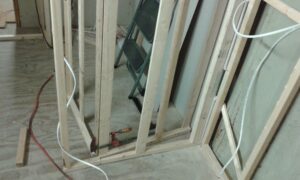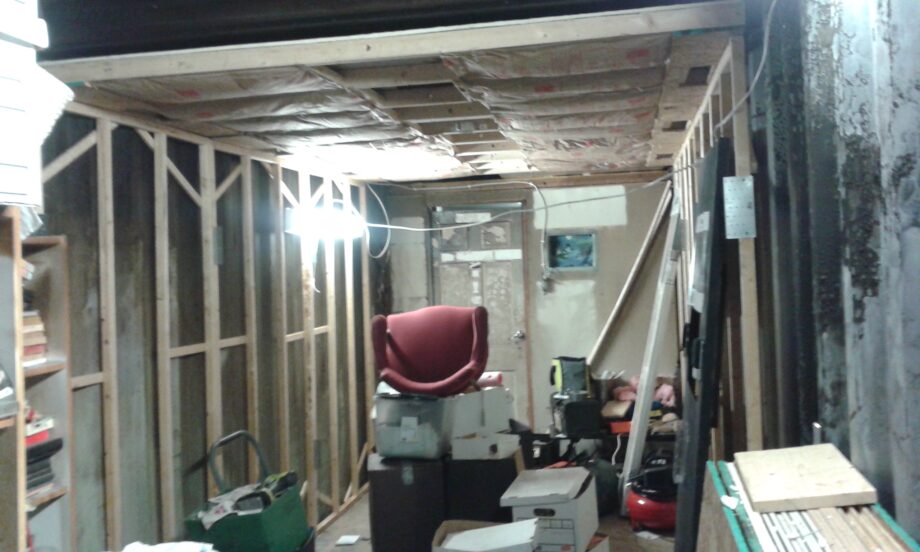Most of my time lately has been dedicated to remodeling work on our office here in Texas. This will give us more work space on-site, including a dedicated voice-recording booth (possibly we can also use it for some foley recording, although at about 3×6 feet, it’s a pretty small space for that).

You might have noticed that the Patreon “progress bar” on our front page is no longer working (the total is actually $230 from 16 backers now, by the way — and thank you for your continued confidence in us!). I originally wrote the script for it using screen-scraping, since there was no API available. However, Patreon altered their page layout, which broke my script.
On the other hand, they have since published an API. I’m writing a version based on the new API, in the breaks when I’m not working on construction.
Since my last post, I’ve also gotten the “KitCAT” script to open a text window in Blender, which took a lot of trial and error (the documentation on the Blender Python API seems to be kind of spotty — there’s a lot for certain tasks, and not much for others). So that takes care of the basic UI concept. After that, I’ll need to focus on the scripted tasks we need. This is a good place to stop on that until I’ve got a TACTIC server up to test it against.

As described in my “virtual studio” video, I’ve also been reading up on DevOps and the Vagrant, Ansible, and Docker tools for managing servers, as well as data backup strategies. I plan to migrate all of our web server software (which is currently managed the old-fashioned way — what DevOps folks call a “special snowflake” server, that has to be maintained very conservatively to avoid crashing our public website). These days, everything can be much more automated, and we need to catch up with the times.
I intend to use this not only to maintain our public web site and the new TACTIC-based production services, but also to maintain a rendering cluster for animation.
Since I’ve not been able to raise enough money to build the render cluster straight out, I’ve decided to try a more incremental approach, while still hoping to maintain consistency between server blades. So I purchased a single CPU, RAM, and motherboard to do a test build. If it works, I can go ahead and buy identical motherboards for the rest. The motherboards are fairly inexpensive (about $50-$100 each), and they are the most prone to compatibility problems, obsolescence, and limited availability. It should then be possible to buy the CPUs ($150-$200) and RAM modules ($100-$150) as we can afford them, without having to worry about them being discontinued. Even just one or two dedicated rendering machines will make a big difference for us.
This is a lot of boring work that doesn’t make pretty pictures for me to show you, but it is essential to our production process. I’m really looking forward to finishing up this remodeling and IT work so I can get back to the fun stuff!

